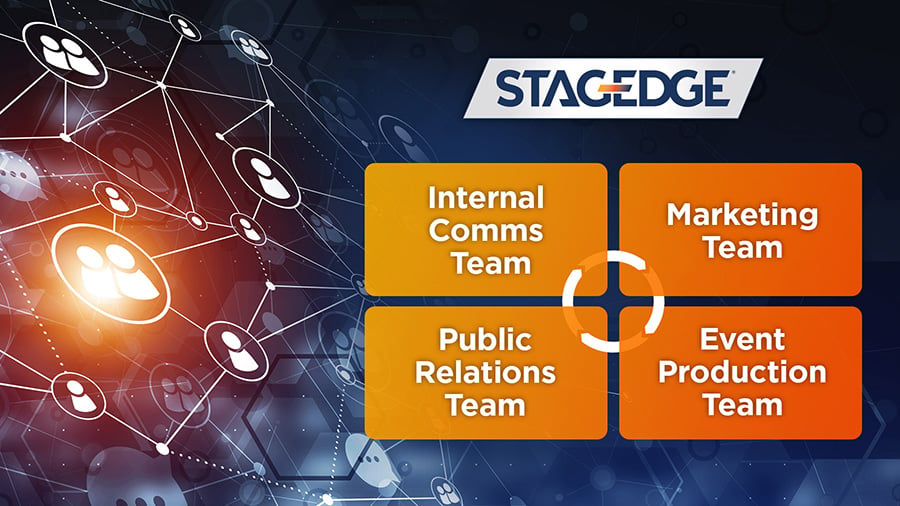You already know that planning and producing a corporate event requires a lot of moving pieces, and companies will often hire multiple vendors to deliver different services or work on various aspects of their event. For example, a single event can involve:
The client's internal staff;
A public relations partner;
A marketing agency; and
An event production company.
Managing all these hands in the same pot is complicated, to say nothing of the competitive or even adversarial relationships that can sometimes arise between partners. One vendor might feel they can provide a better service than the other. Another disagrees with the timeline. Working together can feel like a headache - but it doesn't have to be that way.
Collaboration is essential to exceeding client expectations and pulling off a seamless event, and the bonus is that working together the right way can benefit all partners. Here are five tips we've compiled to make vendor collaboration a win for all involved.
1. Introduce All of the Parties
One of the worst mistakes in event planning (and one we see frequently) is when a client hires different vendors but never arranges for the partners to meet. If you’re a marketing agency brought in for an event and you don’t talk to the production partner, you’re asking for problems—and vice versa. Step one, then, is to plan a meeting that includes all the partners. At a minimum, introductions should consist of:
An explanation of what strengths and resources everyone brings to the table. Does a particular vendor specialize in something specific?
A layout of the scope of the work. Have the client explain which piece everyone was hired to tackle.

2. Build a Culture of Collaboration
"We’re all in this to help the client succeed."
This is the mentality you should strive to create from day one. The client’s needs are the rising tides that raise all ships, and establishing this culture as a priority will set you up for success. To foster collaboration, follow these hints:
Ask for input from your partners. This should go without saying, but we’ll say it anyway—communication is key. Make sure everyone knows you are open and available to help them, but also not afraid to ask them for their help.
Adopt a problem-solving mentality. When things go wrong, come together with a problem-solving mentality. Playing the “blame game” helps no one. Instead, ask how you can all come together to make the project succeed.
Give credit where credit is due. Don’t be stingy with praise when a job is done well, and don’t wait until the end of the project to give it. Ongoing credit for excellent work keeps everyone motivated.
3. Clearly Assign Roles
Maximize efficiency by establishing who’s doing what—right from the get-go. This way you avoid duplication of work and stepping on others’ toes.
As part of this role determination, decide where the handoff from one partner to another occurs so there’s no confusion when the time comes. Similarly, establish who oversees when you move from ideation to execution.
Chief among the roles to define is project management. Decide:
Who "owns" project management? Is it the client, the marking agency, or the production partner?
Which project management tool will be used to keep deadlines on task? Who will manage that tool?
Who will be onboarded and be able to use that tool? (HINT: It should be all partners.)

4. Ensure Event Seamlessness
The day of the event should see the entire team looking like a coordinated unit—from outward appearance and badges to messaging and schedules. After all, everyone is there to deliver a seamless event for the client. In practice, this means:
Everyone has the same talking points and agenda. In other words, all attendee questions are answered in the same way.
If something goes wrong, the solution must be executed in a way that the client looks good (see previous bullet points about collaborative mindsets and eliminating the “blame game.”).
Never forget: if you pull off a fantastic event for the client, everyone wins.
5. Conduct a Post-event Debrief
Once the event ends, vendors often go their separate ways, considering the partnership at an end—but this is a missed opportunity.
Instead, schedule a time to bring all the event partners together to discuss what went well and what could be done better. What are the things you learned that could further improve the client experience at your next event?
Also discuss how you can partner in the future—and explore opportunities for additional collaborations. Great vendor relationships can be powerful referral sources for both parties. Indeed, some of our best collaborators are partners we’ve met along the way!
How Can We Partner with YOU?
While Stagedge is a full-service creative, productions, and platform provider, we work with dozens of the country’s top agencies to give our clients the best experience possible. Contact us to explore how we can support your client’s next event!
